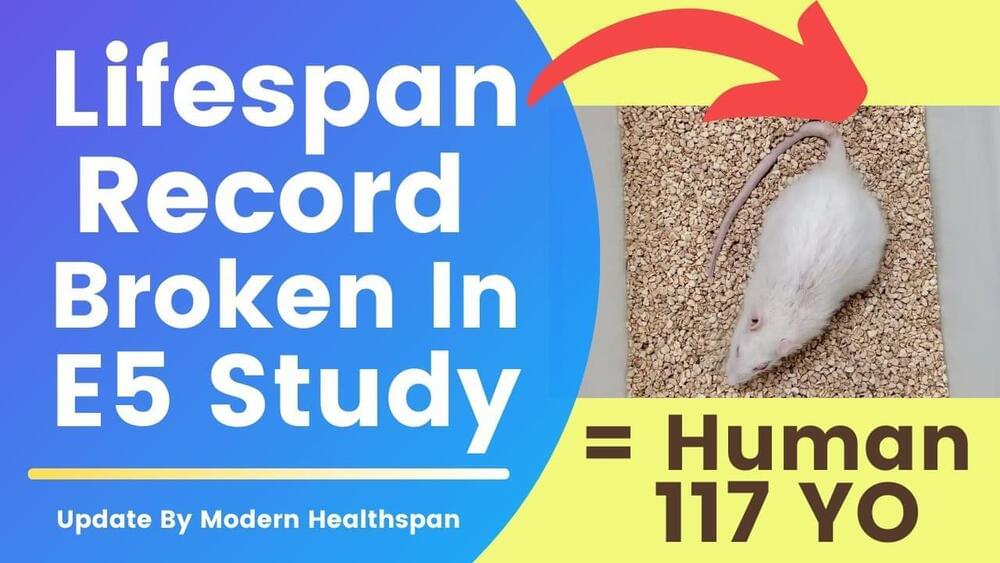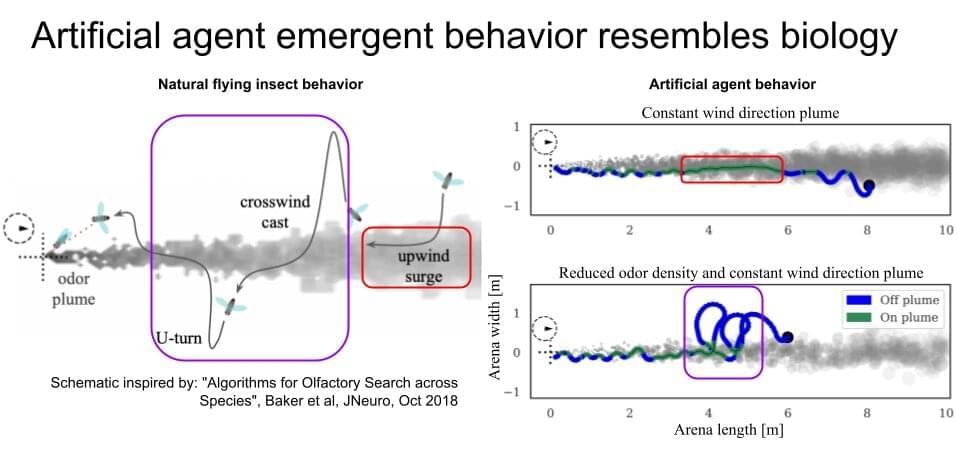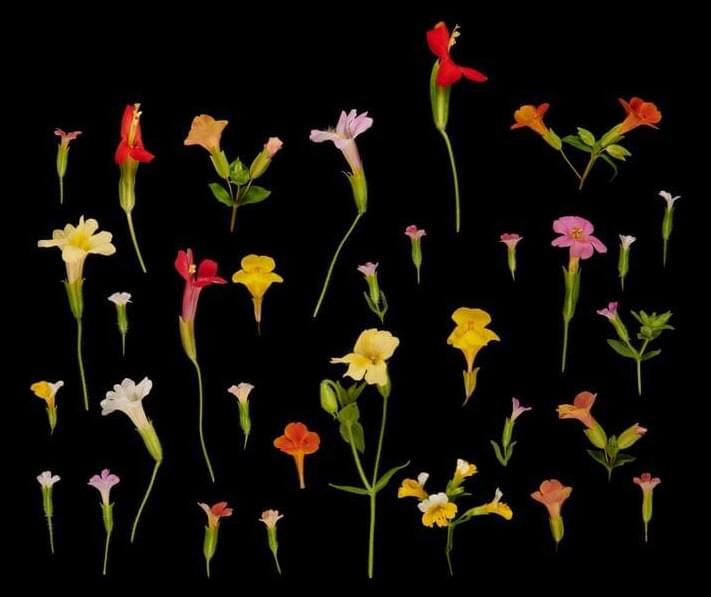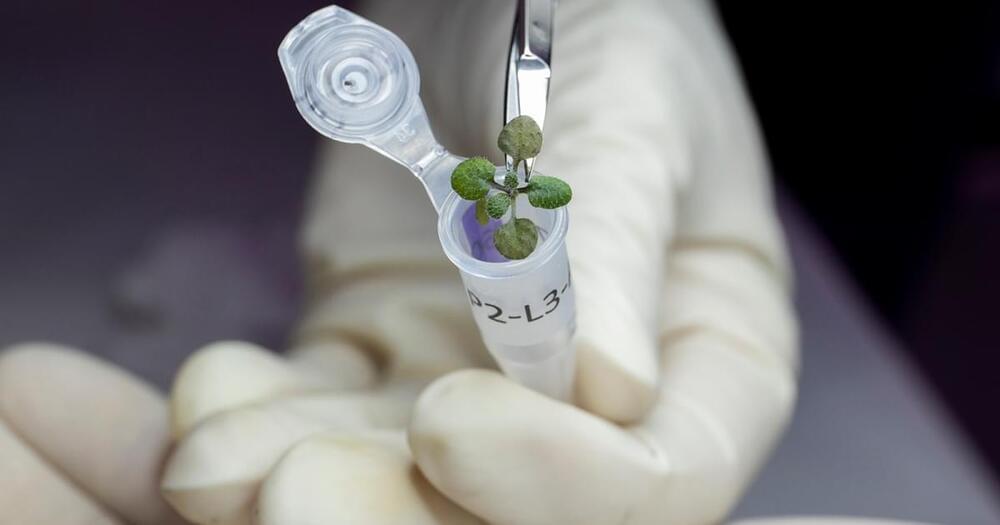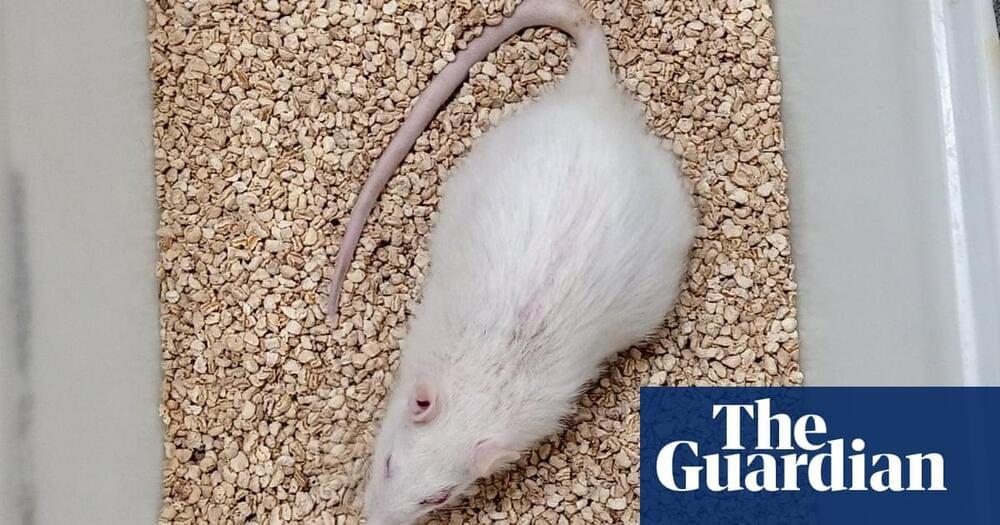Exxon’s green energy stories on the website are gaslighting, REM Tec creates agrivoltaics for farms and Canada builds a mass storage site.
Category: food – Page 78
This has been the news lately. This is a good breakdown of info and apparently Katcher wishes to do dog trials.
In this video we provide a quick update on activities at Yuvan Research. It is very exciting to see that Sima, the last remaining rat in the E5 trial is still alive and has surpassed the age of the previous record for lifespan of a Sprague Dawley rat.
Dr Katcher’s Interview: _https://www.youtube.com/watch?v=DpIbEluiN3o_
For a long time, scientists and engineers have drawn inspiration from the amazing abilities of animals and have sought to reverse engineer or reproduce these in robots and artificial intelligence (AI) agents. One of these behaviors is odor plume tracking, which is the ability of some animals, particularly insects, to home in on the source of specific odors of interest (e.g., food or mates), often over long distances.
A new study by researchers at University of Washington and University of Nevada, Reno has taken an innovative approach using artificial neural networks (ANNs) in understanding this remarkable ability of flying insects. Their work, recently published in Nature Machine Intelligence, exemplifies how artificial intelligence is driving groundbreaking new scientific insights.
“We were motivated to study a complex biological behavior, odor plume-tracking, that flying insects (and other animals) use to find food or mates,” Satpreet H. Singh, the lead author on the study, told Tech Xplore. “Biologists have experimentally studied many aspects of insect plume tracking in great detail, as it is a critical behavior for insect survival and reproduction. ”.
A book entitled “Dinner on Mars” describes how to turn the dry, cold Martian world into a place to grow food for future inhabitants.
The design facilitates efficient land use and can even save water lost to evaporation.
Sunstall, a California-based company, has launched a vertical solar panel, Sunzaun, which can be used in existing fields and arable lands without sacrificing them for clean green energy. The installation is much like conventional solar systems, just that the system uses bifacial solar modules, and the entire array stands like a boundary wall in the field.
As countries look to move away from fossil fuels, the interest in solar energy has increased in recent years. Countries in Europe facing harsh winters are also finding new ways of tapping into solar energy, such as installing solar panels at high altitudes… More.
Sunzuan.
Monkeyflowers glow in a rich assortment of colors, from yellow to pink to deep red-orange. But about 5 million years ago, some of them lost their yellow. In the Feb. 10 issue of Science, UConn botanists explain what happened genetically to jettison the yellow pigment, and the implications for the evolution of species.
Monkeyflowers are famous for growing in harsh, mineral-rich soils where other plants can’t. They are also famously diverse in shape and color. Monkeyflowers also provide a textbook example of how a single-gene change can make a new species. In this case, a monkeyflower species lost the yellow pigments in the petals but gained pink about 5 million years ago, attracting bees for pollination. Later, a descendent species accumulated mutations in a gene called YUP that recovered the yellow pigments and led to production of red flowers. The species stopped attracting bees. Instead, hummingbirds pollinated it, isolating the red flowers genetically and creating a new species.
UConn botanist Yaowu Yuan and postdoctoral researcher Mei Liang (currently a professor at South China Agricultural University), with collaborators from four other institutes, have now shown exactly which gene changed to prevent monkeyflowers from making yellow. Their research, published this week in Science, adds weight to a theory that new genes create phenotypic diversity and even new species.
Lunar soil was used to grow plants for the first time, suggesting that we may be able to produce food for astronauts off-world.
The results from Katcher’s latest study will be written up when Sima dies, but data gathered so far suggests that eight rats that received placebo infusions of saline lived for 34 to 38 months, while eight that received a purified and concentrated form of blood plasma, called E5, lived for 38 to 47 months. They also had improved grip strength. Rats normally live for two to three years, though a contender for the oldest ever is a brown rat that survived on a restricted calorie diet for 4.6 years.
“The real point of our experiments is not so much to extend lifespan, but to extend youthspan, to rejuvenate people, to make their golden years really potentially golden years, instead of years of pain and decrepitude,” Katcher said. “But the fact is, if you manage to do that, you also manage to lengthen life and that’s not a bad side-effect.”
Results from such small studies are tentative at best, but some scientists believe the work, and similar efforts by others, has potential. A preliminary study from a collaboration between Katcher and experts at the University of California in Los Angeles found that infusions of young blood plasma wound back the biological clock on rat liver, blood, heart and a brain region called the hypothalamus. Commenting on the work in 2020, Prof David Sinclair, a leading expert on ageing at Harvard medical school, said if the finding held up, “rejuvenation of the body may become commonplace within our lifetimes”.
Oldest dog EVER record broken
Posted in food
He has never been on a leash and eats only human food. Bobi, aged 30 years and 268 days, was crowned as the world’s oldest living dog by the Guinness World Records last week. Bobi also holds the enviable record of being officially the oldest dog to have lived on the planet.
Bobi, a 30-year-old Rafeiro do Alentejo from Portugal, is now the oldest verified dog ever.
The price of eggs has more than doubled in the last year due to inflation, avian flu outbreaks, and the war in Ukraine. But demand for the breakfast and baking staple hasn’t gone down much; people like eggs, and there aren’t many viable substitutes that truly taste, look, and perform like the real thing.
An Israeli startup called Yo Egg thinks it has a solution in the form of vegan eggs. The product doesn’t share much with real eggs in terms of composition, but the company says it’s achieved a near-exact match in taste and texture.
Yo eggs are made primarily of water, vegetable oil, soy protein, and chickpea protein, with small amounts of other ingredients including potato starch, yeast, and seaweed extract. One egg has 40 calories, 1 gram of fat, no cholesterol, and 3 grams of protein.

